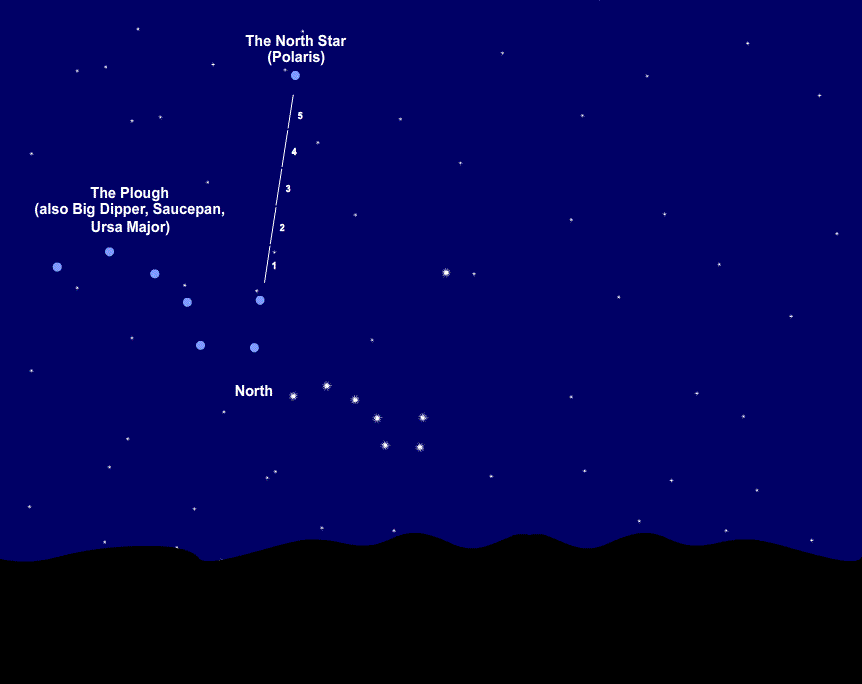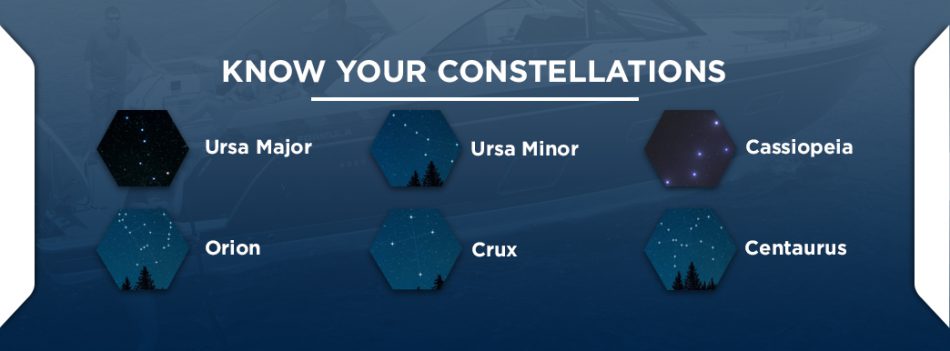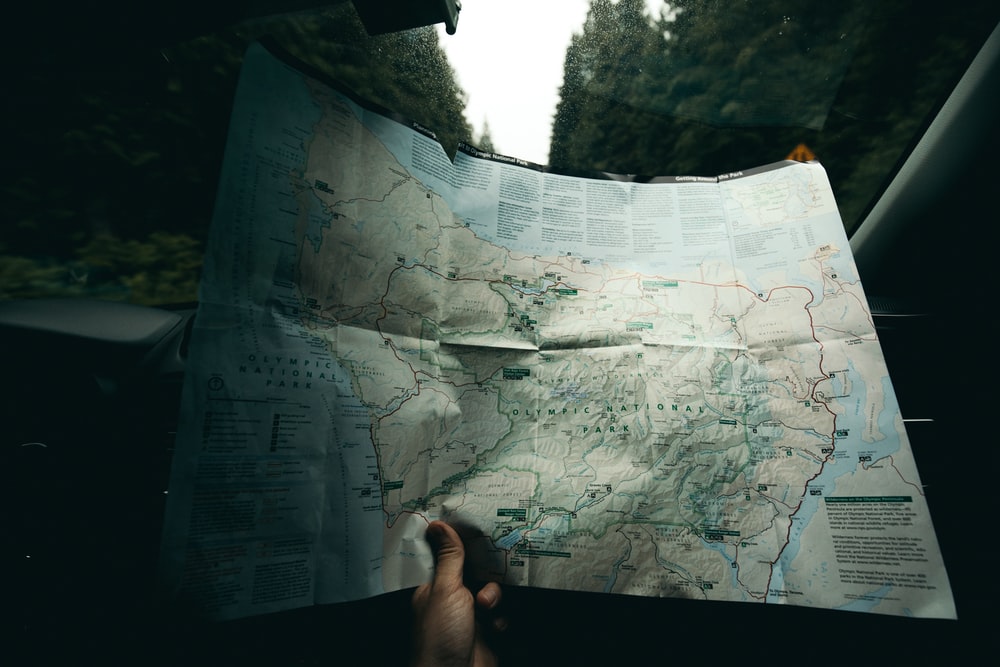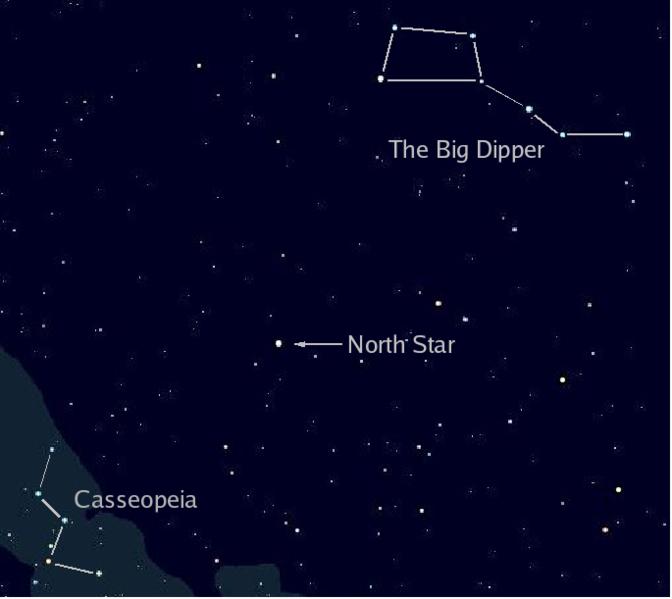GPS dead and your map soaked from hours of rain? Maybe you never learned to use a compass properly in the first place. Even when everything fails and darkness settles around you, you are not helpless. Long before satellites, phone apps, or laminated topo maps existed, people crossed oceans, deserts, and forests with nothing but the night sky as their guide. Those ancient travelers trusted the stars, reading patterns in the darkness the same way we read symbols on a map today.
They managed to travel enormous distances with a confidence that often surprises modern hikers. And the truth is simple: you can learn to do the same. With a bit of patience and a willingness to look up, the sky becomes a living map—one that never needs batteries, never tears in the rain, and never leaves you stranded unless clouds cover it.
Just like those early explorers, you can figure out where you are and where you’re heading by learning the behavior of a few key stars. With practice, the night sky stops being a chaotic swirl of distant lights and begins to feel more like a familiar neighborhood where every bright point has a purpose.
Star navigation is one of those underrated outdoor skills that every camper, hiker, and boater should keep in their toolkit. It’s a simple and powerful way to get your bearings when visibility is low or technology fails, and it adds a kind of quiet confidence to nighttime travel—knowing the sky itself can guide you.

How to Navigate Using Stars
By observing the positions and movements of the stars, travelers can determine direction even in unfamiliar terrain or far out at sea. Star navigation has guided seafarers for centuries—from Polynesian voyagers crossing the Pacific to northern explorers pushing deep into icy waters. Their survival depended on understanding how stars behave through the seasons, and their methods remain surprisingly effective today.

The stars act like a series of natural lamps floating high above the world. If you can identify a star positioned over the place you want to reach—even thousands of miles away—it can point the exact direction you need to travel. Imagine calling a friend in another country and asking them to name the star directly above them. If you located that star overhead, the point on the horizon below it would be the exact direction toward your friend’s location.
The catch is that most stars move across the sky as Earth spins. A star that guides you for a moment will drift out of place shortly afterward, making it impossible to rely on for long. You would need constant updates to keep tracking it. Fortunately, one special star barely appears to move at all: Polaris, better known as the North Star.
The easiest way to locate Polaris is by finding the group of seven stars called the Plough (or the Big Dipper in the U.S.). It looks like a tilted saucepan in the sky. Two stars on the outer edge of the “pan”—nicknamed the pointer stars—directly indicate the North Star. If you draw an imaginary line from these stars outward, Polaris sits roughly five times that distance away. True north lies directly beneath it on the horizon.
The Plough rotates around the North Star throughout the night, so sometimes it sits sideways, sometimes upright, and sometimes upside down. But the distance and angle between the pointer stars and Polaris remain constant—a dependable relationship you can always trust.
Polaris is such an important navigational tool because it hangs almost perfectly above the North Pole. Whenever you try to find north, whether you're walking a short trail or plotting a major journey, what you're really trying to do is determine the direction of the North Pole. Polaris offers a direct line toward that point.
Why Learn to Navigate Using Stars?
Hundreds of years ago, early navigators crossed entire oceans with nothing but the sky as a guide. They memorized how constellations shifted across the seasons, tracked the rising and setting points of key stars, and used the night sky like a complex but reliable compass. With time, new tools—sextants, compasses, charts, and eventually GPS—pushed celestial skills into the background. But the basic principles remain invaluable.
Star navigation still matters today for several important reasons:
• Find your way during equipment failure
Even the most advanced GPS can malfunction, lose battery power, or simply break. When you can’t see landmarks and the sun has set, stars offer direction you can rely on. Many boaters still use star navigation as a backup for emergencies.
• Grow your understanding of the natural world
Learning which stars sit in which constellations—how they move, how they rotate, and which ones stay visible all year—connects you to the sky in a way that feels ancient and grounding. You begin to sense the rhythm of the heavens the way early explorers once did.
• Share an impressive, unique skill
Star navigation is equal parts practical and fascinating. It’s the kind of skill that captivates friends and sparks conversations around a campfire, because it feels both mysterious and deeply human.
Even with modern innovations that offer near-perfect accuracy, learning to navigate using stars gives you a sense of independence that no device can replace. When you know how to read the sky, you always carry a natural compass—one that works as long as the stars are shining.
How to Use the Night Sky for Navigation
Throughout history, mariners have used a wide range of celestial techniques to pinpoint direction on the open ocean. Here are the essential steps for navigating by starlight, whether you’re in the Northern Hemisphere or the Southern Hemisphere.
1. Know Your Constellations

Celestial navigation depends completely on knowing how to recognize star patterns. Constellations act like familiar landmarks in the sky, each holding a particular shape that returns reliably each season. As Earth moves around the sun, different constellations drift in and out of view, but the circumpolar ones—those that never rise or set—remain visible year-round.
These circumpolar constellations are crucial because they create stable reference points that don’t disappear as the night progresses. Learning them helps you orient yourself no matter when you start navigating.
Below are the principal constellations used by star navigators:
• Ursa Major
A massive northern constellation containing the Big Dipper. Its seven bright stars form a clear ladle shape that many cultures have used as a sky compass. The two stars forming the front edge of the “bowl” are the famous pointer stars leading directly to Polaris.
• Ursa Minor
Home to the Little Dipper and the North Star itself. Though fainter than Ursa Major, its position is key because Polaris sits at its end.
• Cassiopeia
A striking W-shaped constellation opposite the Big Dipper in the sky. When the Big Dipper is low, Cassiopeia is high—allowing you to triangulate the North Star even when the Dipper isn’t visible.
• Orion
One of the most recognizable constellations in the world. Its three-star belt, the bright shoulders and knees, and the hanging sword have guided travelers for centuries, especially near the equator.
• Crux (the Southern Cross)
The most important constellation for navigation in the Southern Hemisphere. Its cross shape helps pinpoint due south with remarkable accuracy.
• Centaurus
A large and bright southern constellation used alongside the Southern Cross. Its pointer stars—Alpha and Beta Centauri—assist in locating the south celestial pole.
Mastering these constellations is the foundation of all star navigation. Once you can consistently pick them out in the sky, you gain the ability to orient yourself almost anywhere.
2. Find the North Star
For thousands of years, people have relied on the North Star, also known as Polaris, to find true north. What makes Polaris so special is its position almost exactly above Earth’s North Pole. While every other star appears to move in a circular path across the night sky, Polaris stays nearly fixed in one single spot. That stability turns it into one of the most dependable natural markers you can use outdoors.
Finding Polaris can be done in a few different ways depending on which constellations are visible at the moment:
• Find the Little Dipper
Polaris is the star at the very tip of the Little Dipper’s handle. The challenge is that the Little Dipper is fairly dim, so in places with light pollution or hazy skies, spotting it can be difficult. If you do find it, though, the North Star is unmistakable at its end.
• Use the Big Dipper
This is the most popular method and the easiest for beginners. First locate the Big Dipper—seven bright stars shaped like a ladle or saucepan. Focus on the two stars that form the “front” of the bowl. These are the pointer stars. Draw an imaginary line straight upward, and follow it roughly five times the distance between those two stars. You will land exactly on Polaris. If you keep going past that point and reach Cassiopeia, you’ve gone too far.
• Use Cassiopeia
When the Big Dipper hangs low on the horizon and is harder to see, the W-shaped constellation Cassiopeia rises high in the sky. By drawing a line outward from the wider end of the “W,” you can find the North Star on the opposite side of the sky from the Big Dipper.
Once you identify Polaris, determining the direction becomes simple: look straight down to the horizon beneath it. That point is true north. Every other direction can then be found from that reference.
3. Find the Southern Cross

Travelers in the Southern Hemisphere can’t use Polaris—it’s simply not visible from below the equator. Instead, they rely on the Southern Cross, also known as Crux, which is the brightest and most important southern constellation for navigation. At latitudes deeper than roughly 35° south, Crux remains visible almost all year, making it a consistent guide.
The Southern Cross appears as four main stars forming an uneven cross with one additional star off to the side. When the long axis of the cross points straight down and the constellation reaches its highest point in the night sky, it is aligned perfectly with due south. But when it’s off-center or at an angle, you need to do a little calculation:
-
Imagine a line running from Gacrux (the top star of the cross) down to Acrux (the bottom star).
-
Extend this line roughly 4.5 times its length directly downward.
-
The point you reach in the sky marks the south celestial pole.
-
Drop your eyes down to the horizon beneath that point—this is true south.
There is also a more precise method using the neighboring constellation Centaurus. Two bright stars from Centaurus, Alpha Centauri and Beta Centauri, act as pointer stars similar to those in the Big Dipper. By creating an imaginary perpendicular line from the midpoint between these two stars and projecting it toward the extended axis of the Southern Cross, the intersection of those lines indicates the south celestial pole. It’s slightly more complicated, but the accuracy is impressive once you get comfortable with the pattern.
4. Find East and West
Once you know true north (in the Northern Hemisphere) or true south (in the Southern Hemisphere), finding east and west becomes straightforward. Stand facing the pole direction you’ve identified:
• Facing north: your right hand points east and your left hand points west.
• Facing south: your right hand points west and your left hand points east.
Near the equator, there’s another useful tool—Orion’s Belt. The rightmost star on Orion’s Belt, called Mintaka, rises almost exactly in the east and sets almost exactly in the west every night. If you watch the belt over time, you’ll notice that Mintaka always leads the other two stars as it rises. This simple observation can guide you during nighttime travel in tropical or subtropical regions.
5. Determine Your Latitude

Star navigation becomes even more powerful when you learn how to estimate latitude—that is, how far north or south you are from the equator. Sailors in the Northern Hemisphere often rely on the height of the North Star above the horizon. The angle between Polaris and the horizon is roughly equal to your latitude. If Polaris sits 40 degrees above the horizon, you are at about 40° north.
The most accurate way to measure that angle is with a sextant or similar navigational instrument. But you can estimate it surprisingly well using only your hands:
• Extend your arm fully and make a closed fist.
• Your fist measures roughly 10 degrees of sky.
• Stack your fists upward from the horizon to Polaris.
• Count how many fists you used—multiply by 10 to get a rough latitude.
In the Southern Hemisphere, you perform a similar technique using the south celestial pole instead of Polaris. First find the pole using the Southern Cross method, then measure the angle between it and the horizon with your stacked fists. It won’t give a perfect reading, but in emergency navigation or wilderness travel, even a rough estimate is better than none.
6. Calculate Your Longitude
Finding east–west position is far more challenging than determining latitude. Early navigators struggled with this problem for centuries. Without clocks or precise measurements of time, they could only make rough guesses by observing the positions of certain stars, especially the ones that rose and set at predictable angles.
One traditional method required picking a specific star that rises at a known time. By recording its exact position each night at the same hour, sailors could estimate their longitudinal change after weeks at sea. But this method demanded flawless consistency, good weather, and exceptional memory. Even small errors could send a ship dangerously off course.
Thankfully, modern navigation has solved the longitude problem. With accurate clocks, charts, and GPS technology, measuring longitude is now incredibly easy. Still, understanding the difficulty early sailors faced gives you a deeper appreciation for the precision and reliability we now take for granted.
7. Use Your Resources
Star navigation can be done by eye alone, but several tools make the process smoother and more precise:
• The Nautical Almanac
Published yearly in the U.S. and the U.K., this guide contains the positions of stars, planets, the sun, and the moon for every day of the year. Navigators have relied on versions of this book for centuries.
• Navigational Star Chart
Showing 57 major navigational stars, these charts allow sailors to calculate position by identifying three stars and drawing circles of position. Where the circles intersect marks the navigator's location on the globe.
Even though modern boats come equipped with sophisticated electronics, knowing how to navigate by the stars gives you the reassuring skill to handle unexpected situations. Understanding both the science and the art behind starlight navigation connects you with centuries of explorers who trusted the night sky long before technology existed.
If you ever decide to practice these skills in the real world, remember that patience, clear skies, and repeated observation are your best teachers. The stars reveal their secrets slowly—but once they do, the night sky becomes an open map you’ll always know how to read.






